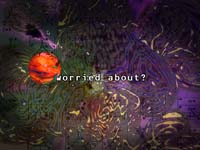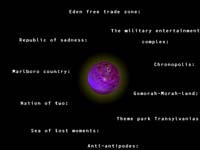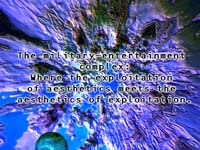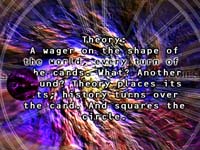Biography
Brad Miller is a multimedia artist who works at the College
of Fine Arts, University of New South Wales, Sydney, Australia. His
CD-Rom, Digital Rhizome, has been exhibited at
many international venues. With backrounds in electrical engineering,
graphic design, and sculpture, Brad recently has been researching networked
GUI design for the Sydney University Architectural Design and Computing
Department. He was co-producer of Diminishing Dimensions
for ABC Radio National, a program that explores the implications of
nanotechnology. brad.miller@unsw.edu.au McKenzie Wark lectures in media
studies at Macquarie University and is the author of two books. Virtual
Geography (Indiana University Press), explores the global
dimension to news media events. Virtual Republic
(Allen & Unwin) looks at the problem of reinventing Australian culture
in the flux of global media flows. The writing that became part of Planet
of Noise began as a series of experiments in writing simple
hypertext in html format. http://www.mcs.mq.edu.au/~mwark Mckenzie Wark@mq.edu.au
Conceptual Description
Planet of Noise Have you ever wondered about what gets left of the big
bright bold future promised by the unholy alliance of free-market capitalism
and information technology? That's the starting point, or one of starting
points for
Planet of Noise. Info tech is supposed
to make the world over as a world of optimism and choice, where information
circulates with pure speed, unimpeded. Somehow, it doesn't seem to be
working out that way. Multi Hyper Cyber Dig Info. Everything does not
quite work as advertised. The information society flickers on the surface
of a planet of noise. So how could we make art that reflected another
kind of experience of information? Or more particularly, of the dark side
of information--noise? One strategy was to take away the illusion of choice
that's built into a lot of 'interactive' art. You can press
this
button or
that button, but you have no choice but to
press buttons.
Planet of Noise exploits the little
discussed ability of the multimedia format to empower the artist, not
the user, by restricting the choices open to the user. Interactive worlds
are ordered worlds, where the user makes rational choices between the
branching pathways. But not the
Planet of Noise.
Choice is absent. The user follows the pathways the artists make. There
are different 'zones' on this planet, different terrains of experience.
But once you choose one, the procedings are determined by the artists.
But things are not quite as they seem. The contents of the zones don't
match their place names. Each describes a set of sounds, colors, words
that is so fuzzy as to hardly qualify as a set at all. And so we have
the two sides of noise, that lingering residue on the dark side of information:
arbitrary order and the chaos of difference. But
Planet of
Noise does hold out some kind of hope, even as it throws the
user unaided into this bewildering world. The aim of this orchestration
of color and texture, word and sound, is to provide zones in which to
meditate on the experience of immersion in information itself. It is a
map to a world that changes every second. It uses the writing techniques
of the zen koan and the western aphorism to provide the jolt of misrecognizing
who we are or where we are. It is a map, not for finding one's way, but
for losing it.



